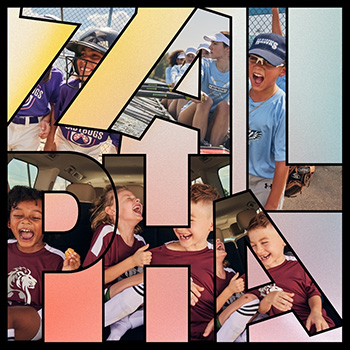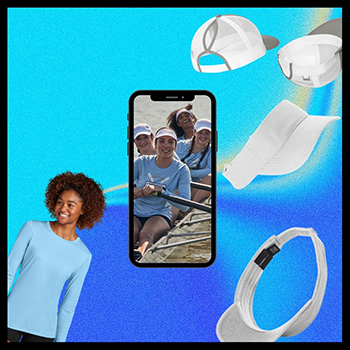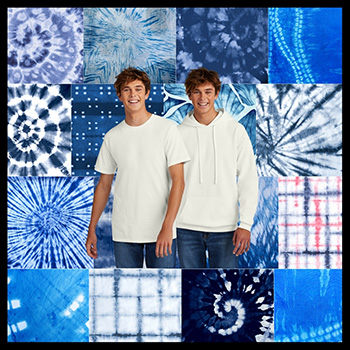I’ve had a few titles and labels for my work over the years, but I think my favorite one has to be “futurist.”
It means that most of my time is spent looking ahead, using what we’re seeing today to project future trends. It’s social anthropology with a specific purpose — clothing trends — and can involve everything from the economy to climate change to the shifting relationship between different generations.
Keeping generational differences in mind seems to get more complicated all the time. The line between generations has always been a bit fluid, and now we have cusp generations (or microgenerations) to consider as well. Cuspers are those who were born in a period that can bridge two generations. For example, those born between 1977 and 1983 are considered “Xennials” and their tendencies often sit somewhere between those of Gen X and Millennials.
 You probably already know that it’s not exactly an exact science, but the influence of how a generation was raised, the technology they depend on and the struggles they face cannot be denied. And speaking of influence, I’ve been taking notice lately of a generation that’s already showing a lot of influence over buying decisions: the Zalphas.
You probably already know that it’s not exactly an exact science, but the influence of how a generation was raised, the technology they depend on and the struggles they face cannot be denied. And speaking of influence, I’ve been taking notice lately of a generation that’s already showing a lot of influence over buying decisions: the Zalphas.
Meet the Zalphas
As you can likely tell from the name, Zalphas are a six-year microgeneration on the cusp between Gens Z and Alpha, roughly including those born between 2008 and 2014. We’re still learning what Zalphas care about, but there’s a few factors Zalphas share:
- They are true digital natives with a firm grasp of technology
- They tend to be more mature at their age than previous generations were
- Zalpha spend is set to grow three times faster than other generations
While most Zalphas are too young to do much of their own spending, they’re already having a big influence on what their parents and other adults around them are buying. These young people, like a nine-year-old boy who created a PowerPoint presentation to convince his parents to buy an Xbox One, have already learned that big buying decisions are not made lightly – and if you want it, you may need to sell it. And that enterprising little boy is not the only one.
The point of taking a look at Zalphas is not to structure your whole business model around them. Not yet anyway! Instead, take a look at your priorities and see where they overlap with these things Zalphas care about, and where you can start nudging them in that direction.

Life Digitally Documented
Zalphas are accustomed to having most of their lives recorded and shared in some way, whether they’re telling their own Instagram stories or showing up in a friend’s latest TikTok masterpiece. They’re also exposed to visual graphics competing for their attention constantly and can quickly decide which deserve their attention. Your website design and social media presence can be attuned to these sensibilities.
Sharing their lives can also mean sharing their health journey, with many Zalphas oriented toward healthy lifestyles. Clothing that encourages and celebrates healthy activity is ideal for this mindset, including sports-themed tees and fleece sweatpants, and be sure to add “twinning” options for parents and family members.

Immediacy Preferred
Having been brought up with smartphones and tablets as a ready resource for in-the-moment information. Zalphas are a group that’s used to finding what they’re looking for quickly, if not instantly. This can apply to virtual scenarios as much as it does to physical products – either way, they often find the quickest way to satisfy their creative impulses.
You can connect to this creativity with apparel that appeals to inspiration and the maker mindet, like the prepared-for-dyeing (PFD) sweatshirt or tee, ready-made for garment dyeing and tie-dyeing projects.

Sustainability Expected
Just like Gen Z, urgency about changes to the climate motivates this generation. Including sustainable products in your selection and making sure that those products are affordable for younger generations gives them a pathway to feeling good about what they can buy and tells them that you’re doing your part for the environment too.
With this in mind, hoodie tees, recycled cotton tees and even the tri-blend raglan from Allmade are all affordable and sustainable options. Keep an eye on the C-FREE selection for future products that also fit the bill.
The more you can understand and prepare for these tendencies, the more ready you’ll be to answer the needs of this influential generation. While they may not be making the big buying decisions today, they’re already making their case to influence the people who do.
Speaking of the future, next month I’ll be giving you a sneak peek at my new trend report, taking us into the latter half of 2024. No spoilers…but I can tell you that hope and creative ideas will play a big part in our future. See you there!
